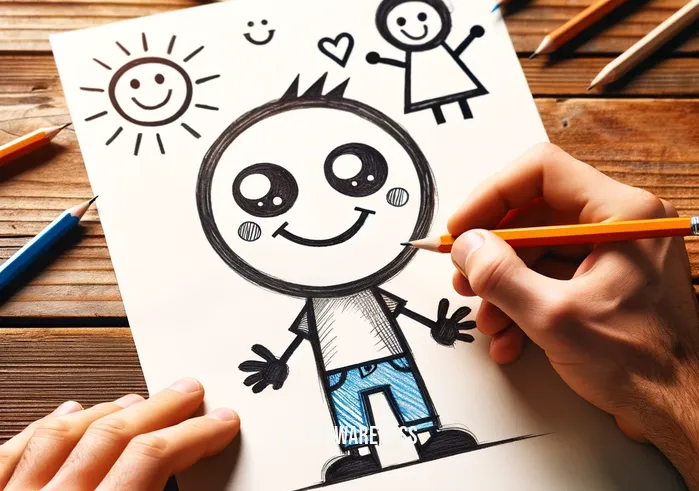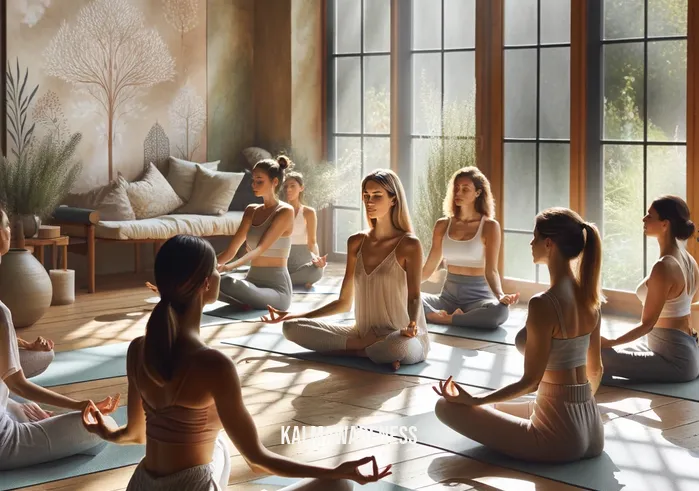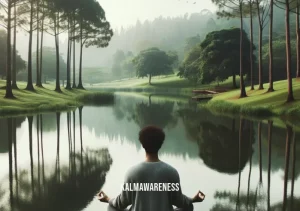The Art of Simple Human Drawing: An Exploration into Minimalism and Expression
The journey of artistry is as varied as the spectrum of colors we use to paint our canvases. From detailed landscapes to abstract forms, artists have countless ways to express themselves. Yet, there is something uniquely compelling about a simple human drawing. It taps into the minimalist ethos, capturing the essence of humanity with just a few strokes. This introduction serves as a prelude to our in-depth exploration, guiding us through the corridors of minimalist art, human sketches, and the profound emotions they evoke.
The Minimalist Ethos in Art
Minimalism is a style that seeks to strip away the non-essential, focusing on simplicity and clarity. The power of minimalism lies in its ability to convey messages or emotions with limited elements. An everyday object like the Holstee Wallet, for instance, encapsulates this aesthetic. It represents a narrative, telling the story of its owner through its bare design and worn-out edges. Similarly, when we focus on the world of art, a simple human drawing encapsulates this same minimalistic spirit.
The Essence of Human Figure in Sketches
Sketching a human figure is an art form that goes beyond mere representation. It requires an understanding of anatomy, proportion, and the subtleties of expression. Each sketch captures a unique narrative, reminding us of the reasons why we tell the story through art. For the viewer, such a sketch can stir memories, emotions, or even inspire new thoughts, much like glimpsing a coloring page that sparks childhood memories.
The Emotional Weight of Simplicity
There’s a common misconception that simple equals easy. But those familiar with the chakra aesthetic or the nuances of a swimming dance move know that simplicity often masks layers of complexity. The same goes for a simple human drawing. It’s a balance of form and emotion, where each line or stroke can signify a range of feelings, from vulnerability, as seen in the vulnerable man, to strength, joy, or sorrow.
A simple human drawing also speaks to our intrinsic need for connection. In today’s world, where missing communication is a growing concern, the clarity and directness of such drawings create an instant bond between the viewer and the artist. These artworks serve as an emotional bridge, reminiscent of the cathartic release one might find by pouring feelings into an emotion jar.
Drawing Inspiration from the World
Our world is brimming with sources of inspiration. From nature’s intricate designs to man-made marvels, the act of drawing stems from an innate desire to capture and translate these wonders onto paper. It’s about tapping into creativity, a process both personal and universal. As we’ll explore in later segments, even the humblest of sketches, like a humble drawing, can be a testament to this inspiration.
Setting the Stage for Deeper Exploration
With this foundation in place, our subsequent segments will delve deeper into the realm of simple human drawings. We’ll uncover the techniques artists employ, the stories behind these drawings, and the global impact of minimalist art. Whether you’re an artist, an enthusiast, or someone curious about the intersection of minimalism and human figures, this series promises insights that’ll reshape your understanding of art.
As we continue our exploration, we’ll also uncover the stories behind launching artistic projects, like the logic behind why launch art using the quickstart approach, and the deeper meanings embedded within these simple drawings. The role of emotions, personal experiences, and universal truths will all come to the fore, offering readers a panoramic view of this intriguing art form.
We invite you to join us in this artistic journey, where every line, stroke, and shade holds a story waiting to be told. Continue reading, and let’s uncover the world of simple human drawing together.

The Nuances of Simple Human Drawing: Techniques and Insights
The art of simple human drawing, while seemingly straightforward, carries layers of depth, techniques, and stories. In this segment, we will delve deeper into the intricacies of this form of art, understanding its varied styles, techniques employed by artists, and the profound impact each stroke can have.
Why Simplicity Matters in Art
In an age where be here now tattoos promote the idea of being present and the power of now, art also leans towards this philosophy. The elegance of simplicity lies in its ability to:
- Direct communication: Simple drawings speak directly to the viewer, devoid of distractions. It reminds us of how what kids can tell us about healing – sometimes the simplest expressions carry the most profound messages.
- Universal understanding: A simple human sketch can be universally recognized, bypassing language or cultural barriers, akin to how a simple human step can resonate with many irrespective of their backgrounds.
- Purity of form: By removing unnecessary elements, the pure essence of the subject shines through, much like the purification of the frequency for the throat chakra.
Techniques to Master
Every artist has a toolkit of techniques that they employ, refining them over time. Here are some pivotal techniques specific to simple human drawing:
- Stylization: Giving a unique touch or style to the figure, often influenced by the artist’s own experiences or inspirations.
- Proportion and Scaling: Ensuring that the body parts are in harmony with one another.
- Shading: Adding depth and dimension to the drawing using varied shades.
- Posture: Capturing the mood and emotion through the posture of the human figure, similar to how a dance move like the swimming dance portrays emotion through movement.
- Facial Expressions: The window to the soul, mastering facial expressions can turn a simple sketch into a deeply emotive piece.
A Snapshot: Key Elements in Simple Human Drawing
| Element | Importance | Example |
|---|---|---|
| Lines | Define boundaries, add depth | Contour of a face |
| Shades | Provide dimension, realism | Shadows under the eyes |
| Posture | Conveys emotion, setting | Slouched posture = melancholy |
| Facial Expressions | Direct insight into the subject’s emotions | Smile = happiness |
| Negative Space | Enhances focus on the main subject, adds depth | Space around a solo figure |
The Emotional Impact of Simple Drawings
Much like how said in a sentence can evoke powerful feelings, simple human drawings, though devoid of intricate details, can stir deep emotions. Whether it’s nostalgia, joy, sorrow, or hope, each drawing has the potential to resonate differently with every viewer, much like the variable interpretations one might derive from an I be feeling like the man when I walk through lyric.
Drawing parallels with our everyday life, simple sketches remind us of the importance of cherishing every moment, of seeing the beauty in the mundane, and of the power of simplicity in conveying profound emotions.
In the next chapter, we will further delve into the world of simple human drawing, discussing its evolution, contemporary artists making waves in this domain, and the future of this art form. Stay with us as we continue to unravel the myriad layers of this captivating world. Continue reading, and let’s embark on this artistic odyssey together.

Harnessing Hope and Inspiration Through Simple Human Drawing
The power of art lies not just in its aesthetic appeal, but in its ability to stir emotions, ignite passions, and inspire souls. Within the vast world of art, the minimalistic realm of simple human drawing holds a unique position – its inherent simplicity makes it an apt canvas for raw emotions, providing hope and inspiration to many.
The Underlying Power of Minimalistic Sketches
It’s been said that “object lover finds beauty not just in the object itself, but in the emotions it evokes.” This can be equated with simple human sketches. Stripped of embellishments, these drawings often mirror our intrinsic human emotions, acting as windows to the artist’s soul and resonating deeply with the viewer.
For example, consider a piece portraying a lone figure, its silhouette standing against the horizon. The sheer simplicity of the drawing can evoke myriad emotions – loneliness, hope, resilience, or anticipation. It’s this power of eliciting profound emotions from sheer simplicity that sets such drawings apart.
Quotable Insights on Hope and Minimalistic Art
Throughout history, many artists and thinkers have spoken about the power of minimalism and simplicity. Their words stand testament to the immense potential of simple human drawing:
- “In the simplicity of a line, lies the complexity of a thousand thoughts.” – Unknown
- “Minimalism isn’t about removing things, but adding meaning.” – Leo Babauta
- “Art is the elimination of the unnecessary.” – Pablo Picasso
- “Hope is being able to see the light despite all of the darkness.” – Desmond Tutu
- “Through the strokes of simplicity, we find the curves of sophistication.” – John Keats
Real-life Inspirations: Stories Behind the Sketches
Anna’s Story: Anna, a young woman from Madrid, turned to simple human sketches during a challenging phase in her life. She felt an overwhelming sense of disconnect from the world around her. One day, inspired by missing communication, she began sketching a series of human figures, each representing an emotion she felt. Her series, aptly titled “Emotions Unveiled”, became her way of communicating her feelings. These sketches, in their stark simplicity, became her beacon of hope, helping her reconnect with herself and the world around her.
David’s Odyssey: David, an army veteran, struggled with PTSD after returning from duty. As part of his healing process, he was introduced to art therapy. David’s sketches, often inspired by the theme of vulnerable man, showcased the fragile side of humanity. Through his sketches, he not only found an avenue to express his turmoil but also discovered hope and inspiration for a brighter tomorrow.
The Symbiotic Relationship: Drawing and Hope
Much like how the holstee wallet has become symbolic of carrying hope and memories, simple human drawings, too, carry the hopes, dreams, and emotions of both the artist and the observer. They serve as constant reminders of the strength and resilience of the human spirit.
When an artist pours their emotions into a sketch, they often find solace, a sense of purpose, and a spark of hope. Conversely, viewers, through their interpretations, derive inspiration and a sense of connection. This creates a beautiful, symbiotic relationship, where art becomes both a source and a recipient of hope.
In the next chapter, we will explore the global impact of simple human drawing, looking at its influence across cultures and its role in global movements. Dive deeper with us into the mesmerizing realm of minimalistic art, as we uncover its transformative power on a global scale. Your journey of artistic exploration is far from over; continue reading to uncover more wonders.
@
The Artistic Elements of Simple Human Drawing
When diving deep into the world of art, especially the niche of simple human drawing, it’s essential to understand the elements that breathe life into these drawings. While the beauty of such sketches may seem inherent, there’s a myriad of factors and choices artists make, consciously or subconsciously, that lead to the final masterpiece. Let’s break down these artistic choices.
Key Components of Simple Human Drawings
Outline and Contour:
- Essence: The backbone of every drawing, outlines define the shape and form.
- Relevance in Simple Human Drawing: With limited detail, every line matters. The artist must determine how thick or thin the line should be, or whether it should be broken or continuous. As shared in the article about the swimming dance move, every movement has its unique rhythm, just like every line in a drawing.
Shading and Texture:
- Essence: Adds depth and dimension.
- Relevance in Simple Human Drawing: Given the absence of color, shading becomes even more crucial. It differentiates between the light and dark areas, giving the figure its three-dimensional feel.
Expression and Emotion:
- Essence: What makes art ‘alive’.
- Relevance in Simple Human Drawing: The position of a curve, the angle of a line, or even the absence of one, can depict emotions. A slightly downturned line can portray sadness, while an upward curve might suggest happiness or hope. An emotion jar, like the one described here, can hold numerous feelings, and similarly, a simple drawing can encapsulate a whirlwind of emotions.
Space and Perspective:
- Essence: Determines the spatial relationship between objects.
- Relevance in Simple Human Drawing: With limited elements in the drawing, the use of space becomes pivotal. How much blank space surrounds a figure can depict loneliness or freedom.
Benefits of Simple Human Drawing
Therapeutic Value: Like the tapping into creativity process, drawing is therapeutic. The simplicity of human sketches allows for a raw expression of emotions, aiding in mental healing.
Skill Enhancement: They say practice makes perfect. Starting with simple sketches helps budding artists hone their skills. It’s a foundational step, much like learning the basics in coloring page parts of speech starter.
Versatility: Such drawings can fit any narrative. Whether it’s a brand looking for a logo or an individual seeking a be here now tattoo, the versatile nature of simple drawings caters to all.
Quick Execution: Given their simplicity, these drawings can be executed swiftly, making them ideal for initial concepts or brainstorms, similar to launching an idea using the quickstart approach.
While these sketches may seem straightforward at first glance, the nuances and choices made during their creation are manifold. The beauty of simple human drawing is in its deceptive simplicity; beneath each line lies a thought, an emotion, a story.
As we head into our final chapter, we’ll explore the broader impacts of simple human drawing in contemporary society, understanding its role and significance in modern times. The journey through the art world is about to come full circle; continue reading to capture the essence of this beautiful artistic form.
@
Reflecting on the Essence of Simple Human Drawing
As we culminate our exploration into the world of simple human drawing, it’s essential to sit back, take a deep breath, and truly absorb the transformative power of this art form. While its name may suggest simplicity, every stroke, curve, and shade speaks volumes. It transcends the constraints of intricate art, offering an immediate emotional connection.
The Power in Simplicity
Many times, in our lives, we’re told that more is better. However, the beauty of simple human drawings reminds us of the opposite. Just as the humble drawing showcases, there is immense power in restraint and minimalism. Such art pieces remind us that sometimes, less truly is more.
In the vast universe of artistic expression, where the spectrum ranges from the vividly detailed to the astoundingly simple, it’s this end of the spectrum – the minimal, the unembellished – that offers an immediate resonance. It echoes sentiments similar to those found in the article on missing communication; sometimes, what’s unsaid, or undrawn, holds the most profound meaning.
Continuing the Artistic Journey
Our voyage into the realm of simple human drawings has been enlightening. We’ve ventured into the depths of its essence, touched upon its therapeutic potential, and marveled at its versatility. Just as we learn about what kids can teach us about healing, these drawings, in their innocence and purity, have much to convey.
If there’s one takeaway from this series, it’s the reminder that beauty can be found in the most unexpected places. In a world saturated with detail, there’s an indescribable comfort in returning to basics, to the rudimentary sketches that capture humanity’s essence. The realm of simple human drawing is akin to the chakra aesthetic – fundamental, yet deeply profound.
Embarking on New Adventures
Dear reader, as our journey in this chapter concludes, the broader adventure of exploring art and its myriad forms persists. We encourage you to delve deeper, to visit our previous chapters if you seek clarity, or to wander into new territories of artistic marvels housed within our magazine. The world of art, much like the intricacies of the frequency for throat chakra, is vast and ever-evolving.
A Heartfelt Thank You
Your company on this voyage has been treasured. Together, we’ve embarked on a journey of discovery, understanding, and profound admiration for the art of simple human drawing. As you go forth, may you always find solace in the simplicity of life and art, and remember, every stroke and curve tells a story.
Stay inspired, keep exploring, and always know that our magazine doors are ever open for your return. Looking forward to our next artistic exploration together. Until then, be curious, be inspired, and keep drawing your story.




